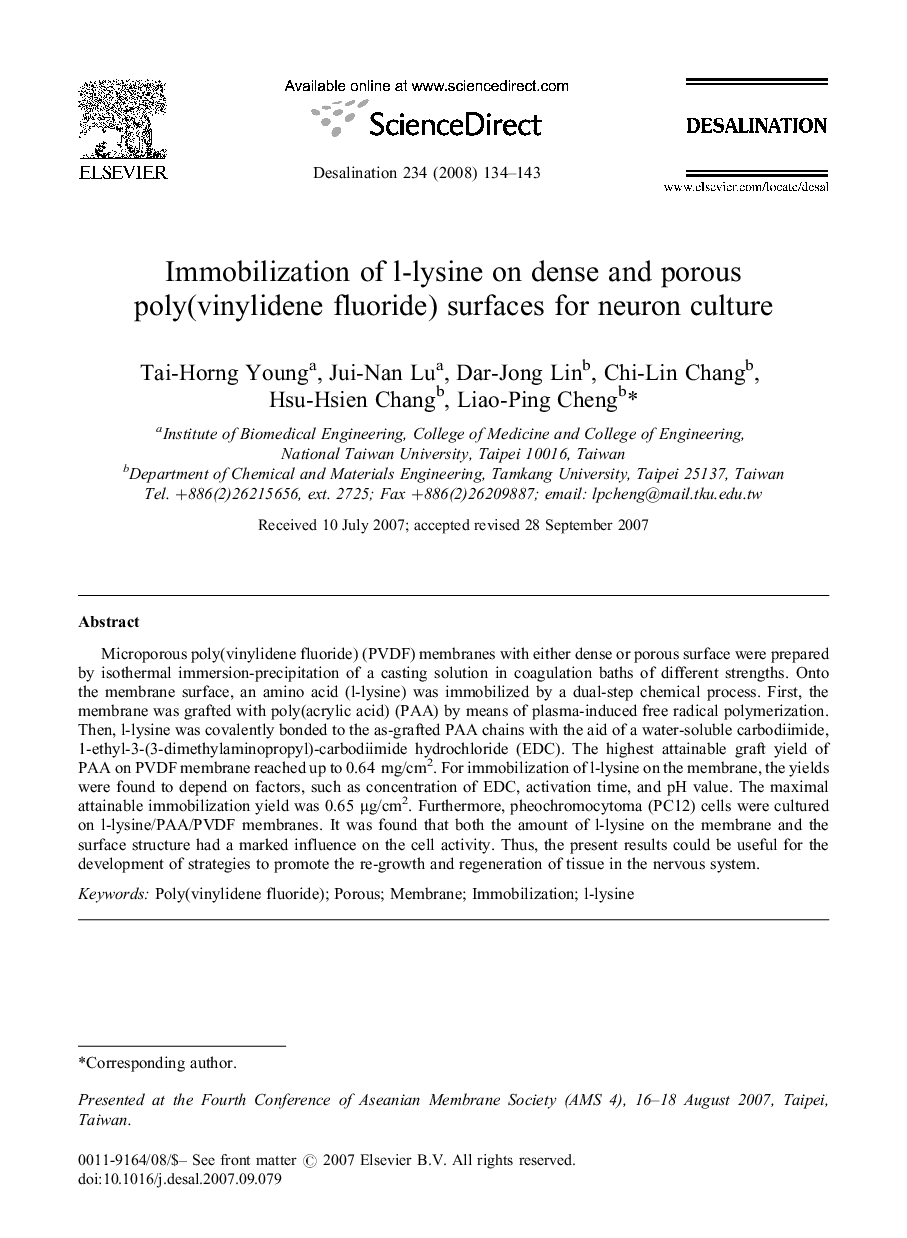| Article ID | Journal | Published Year | Pages | File Type |
|---|---|---|---|---|
| 626900 | Desalination | 2008 | 10 Pages |
Microporous poly(vinylidene fluoride) (PVDF) membranes with either dense or porous surface were prepared by isothermal immersion-precipitation of a casting solution in coagulation baths of different strengths. Onto the membrane surface, an amino acid (l-lysine) was immobilized by a dual-step chemical process. First, the membrane was grafted with poly(acrylic acid) (PAA) by means of plasma-induced free radical polymerization. Then, l-lysine was covalently bonded to the as-grafted PAA chains with the aid of a water-soluble carbodiimide, 1-ethyl-3-(3-dimethylaminopropyl)-carbodiimide hydrochloride (EDC). The highest attainable graft yield of PAA on PVDF membrane reached up to 0.64 mg/cm2. For immobilization of l-lysine on the membrane, the yields were found to depend on factors, such as concentration of EDC, activation time, and pH value. The maximal attainable immobilization yield was 0.65 μg/cm2. Furthermore, pheochromocytoma (PC12) cells were cultured on l-lysine/PAA/PVDF membranes. It was found that both the amount of l-lysine on the membrane and the surface structure had a marked influence on the cell activity. Thus, the present results could be useful for the development of strategies to promote the re-growth and regeneration of tissue in the nervous system.
